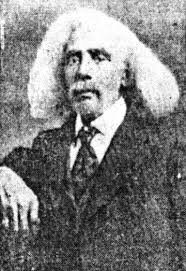
On May 7, 1878, Joseph Richard Winters, an African American inventor and abolitionist, was granted a U.S. Patent number 203,517 for a wagon-mounted fire escape ladder. His design allowed firefighters to quickly extend a portable ladder from a horse-drawn wagon, revolutionizing emergency response in urban areas. Winters’ invention replaced the cumbersome wooden ladders of the era and introduced a more mobile and efficient system. He later received two additional patents for improvements to the mechanism. Born to a Black mother and a Quaker father in Pennsylvania, Winters was also active in the Underground Railroad, blending innovation with social impact.
On May 7, 1976, William H. Hastie was inaugurated as the first Black governor of the U.S. Virgin Islands, marking a pivotal moment in U.S. territorial leadership. Though he had previously served as governor by presidential appointment in the 1940s, this ceremony commemorated his official election through democratic processes. A former federal judge and civil rights trailblazer, Hastie had long advocated for self-governance and representation of the Virgin Islands. His legacy includes pushing for political autonomy and serving as a role model for future generations of Black public servants in the Caribbean and beyond.
On May 7, 1885, Dr. John E. W. Thompson—an African American graduate of Yale University Medical School—was appointed U.S. Minister Resident and Consul General to Haiti. A trailblazer in both medicine and diplomacy, Thompson’s appointment marked one of the earliest high-ranking diplomatic roles for a Black American. He was tasked with strengthening U.S.-Haiti relations during a time when the Caribbean nation held deep symbolic and strategic importance in the Americas. His dual identity as a physician and statesman exemplified the rising influence of educated Black professionals during the post-Reconstruction era.
On May 7, 1867, African American demonstrators in New Orleans staged a powerful “ride-in” protest to challenge segregation on the city’s streetcar system. Just two years after the end of the Civil War, Black citizens demanded equal access to public transportation by boarding cars designated for white passengers. The peaceful yet defiant act ignited similar protests across the South, including in Mobile, Alabama, and other Reconstruction-era cities. These early civil disobedience campaigns laid critical groundwork for the later, more widely known bus boycotts of the 20th century. The riders’ courage in confronting racial injustice helped spark broader conversations about civil rights in postwar America.
On May 7, 1800, Jean Baptiste Pointe DuSable—recognized as the “Father of Chicago”—sold all his property along the Chicago River for $1,200 and left the region. A Black pioneer of Haitian descent, DuSable had established a thriving trading post, farm, and homestead in what would become one of America’s largest cities. His departure marked the end of his foundational role in early Chicago. Despite his lasting legacy, DuSable died in 1818 nearly penniless in St. Charles, Missouri. Today, his contribution is honored with monuments, schools, and museums in Chicago, recognizing him as one of the city’s earliest non-Indigenous settlers and entrepreneurs.
© 2025 KnowThyHistory.com. Know Thy History